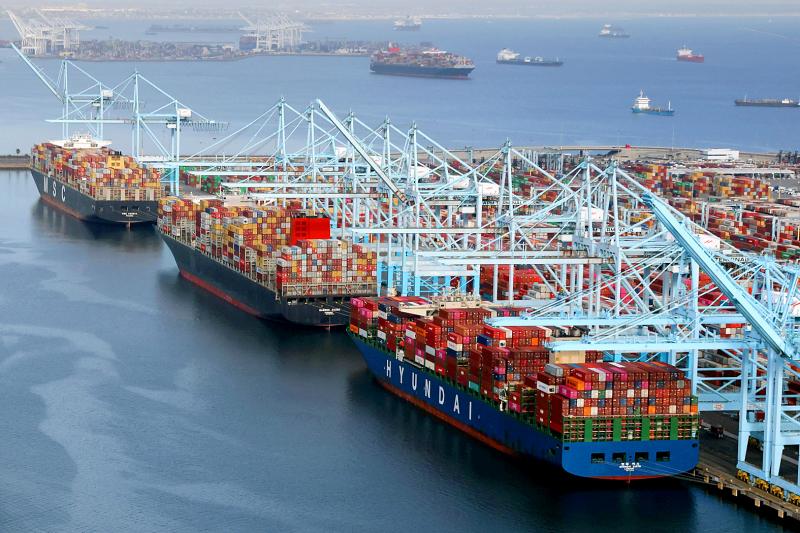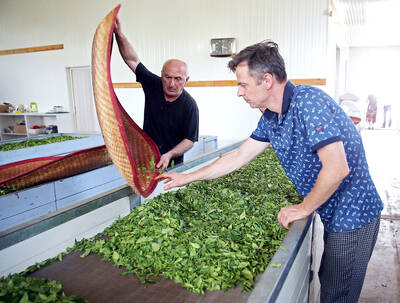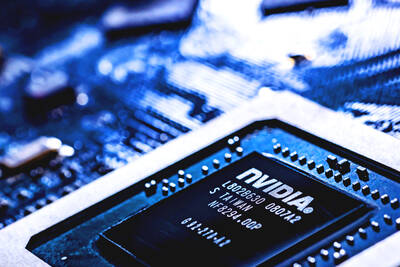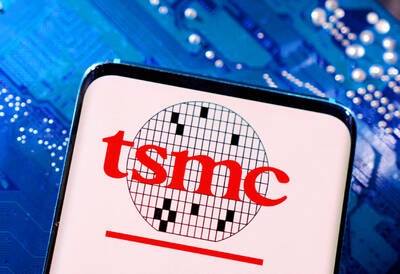Americans should buy their holiday gifts early this year, as the container glut plaguing ports and the supply chain would persist through at least the end of the year, Port of Long Beach Executive Director Mario Cordero said on Thursday.
“Shop early, because these delays and bottlenecks are going to continue to the end of the year,” Cordero said in an interview with Bloomberg Television.
“Hopefully we’ll have some strong mitigating factors,” he added.

Photo: Reuters
Long Beach, the US’ second-largest port, and its nearby and bigger rival, the nearby Port of Los Angeles, are under pressure to relieve the backlog of cargo containers anchored off the coast of southern California and piled up in the yard.
US President Joe Biden this month announced that the Los Angeles port would start operating around the clock — following Long Beach — and got commitments from major retailers to speed up their own unloading of cargo.
The top priority is making sure the entire supply chain runs 24 hours a day, seven days a week, including the port, trucks and warehouses, Cordero said.
Port officials and the Biden administration are having “good collaborative discussions” to make that happen, he said.
Cordero’s port has been overrun with imports, with the number of 20-foot equivalent units of containers at Long Beach up 24 percent this year through September — an increase he attributed in part to surging e-commerce orders.
The challenges are only compounding. As of Wednesday, more than 70 container vessels were anchored off the Los Angeles coast, Marine Exchange of Southern California data showed.
Many of the problems are not new, Cordero said.
The shortage of chassis, the trailers upon which containers sit, came up in a study the port did in 2015, he said.
The COVID-19 pandemic and the boom in demand this year as economies reopened have contributed to the massive snarl.
Only 40 percent of the vessels arriving into the Long Beach port are on schedule, causing further delays in unloading them and getting goods to their final destination, Cordero said.
A frequent source of the tardiness is persistent COVID-19 infection among port workers in Asia, which can shut terminal operations overseas.
“We need to have a different model of how we operate here,” Cordero said.
So far, though, efforts to clear the backlog have had spotty success. Long Beach last month started a pilot program last month to relieve some of the buildup of containers, moving to 24-hour operations and allowing truckers to pick up containers during the previously closed hours from 3am to 7am.
However, no truckers took advantage of newly extended hours during the pilot’s first two weeks, highlighting the limitations of even non-stop container operations.
Rail giant Union Pacific Corp has also started receiving trucks at its freight facility near the ports of Long Beach and Los Angeles at all hours, after previously closing the gates to truckers for much of Sunday and into early Monday.
Logistics giant DHL Supply Chain is also adding up to 15,000 seasonal workers to handle its round-the-clock operations, while also doubling its use of robots, Scott Sureddin, chief executive of the North American unit, said on Bloomberg Television.

When Lika Megreladze was a child, life in her native western Georgian region of Guria revolved around tea. Her mother worked for decades as a scientist at the Soviet Union’s Institute of Tea and Subtropical Crops in the village of Anaseuli, Georgia, perfecting cultivation methods for a Georgian tea industry that supplied the bulk of the vast communist state’s brews. “When I was a child, this was only my mum’s workplace. Only later I realized that it was something big,” she said. Now, the institute lies abandoned. Yellowed papers are strewn around its decaying corridors, and a statue of Soviet founder Vladimir Lenin

UNIFYING OPPOSITION: Numerous companies have registered complaints over the potential levies, bringing together rival automakers in voicing their reservations US President Donald Trump is readying plans for industry-specific tariffs to kick in alongside his country-by-country duties in two weeks, ramping up his push to reshape the US’ standing in the global trading system by penalizing purchases from abroad. Administration officials could release details of Trump’s planned 50 percent duty on copper in the days before they are set to take effect on Friday next week, a person familiar with the matter said. That is the same date Trump’s “reciprocal” levies on products from more than 100 nations are slated to begin. Trump on Tuesday said that he is likely to impose tariffs

HELPING HAND: Approving the sale of H20s could give China the edge it needs to capture market share and become the global standard, a US representative said The US President Donald Trump administration’s decision allowing Nvidia Corp to resume shipments of its H20 artificial intelligence (AI) chips to China risks bolstering Beijing’s military capabilities and expanding its capacity to compete with the US, the head of the US House Select Committee on Strategic Competition Between the United States and the Chinese Communist Party said. “The H20, which is a cost-effective and powerful AI inference chip, far surpasses China’s indigenous capability and would therefore provide a substantial increase to China’s AI development,” committee chairman John Moolenaar, a Michigan Republican, said on Friday in a letter to US Secretary of

Taiwan Semiconductor Manufacturing Co’s (TSMC, 台積電) market value closed above US$1 trillion for the first time in Taipei last week, with a raised sales forecast driven by robust artificial intelligence (AI) demand. TSMC saw its Taiwanese shares climb to a record high on Friday, a near 50 percent rise from an April low. That has made it the first Asian stock worth more than US$1 trillion, since PetroChina Co (中國石油天然氣) briefly reached the milestone in 2007. As investors turned calm after their aggressive buying on Friday, amid optimism over the chipmaker’s business outlook, TSMC lost 0.43 percent to close at NT$1,150